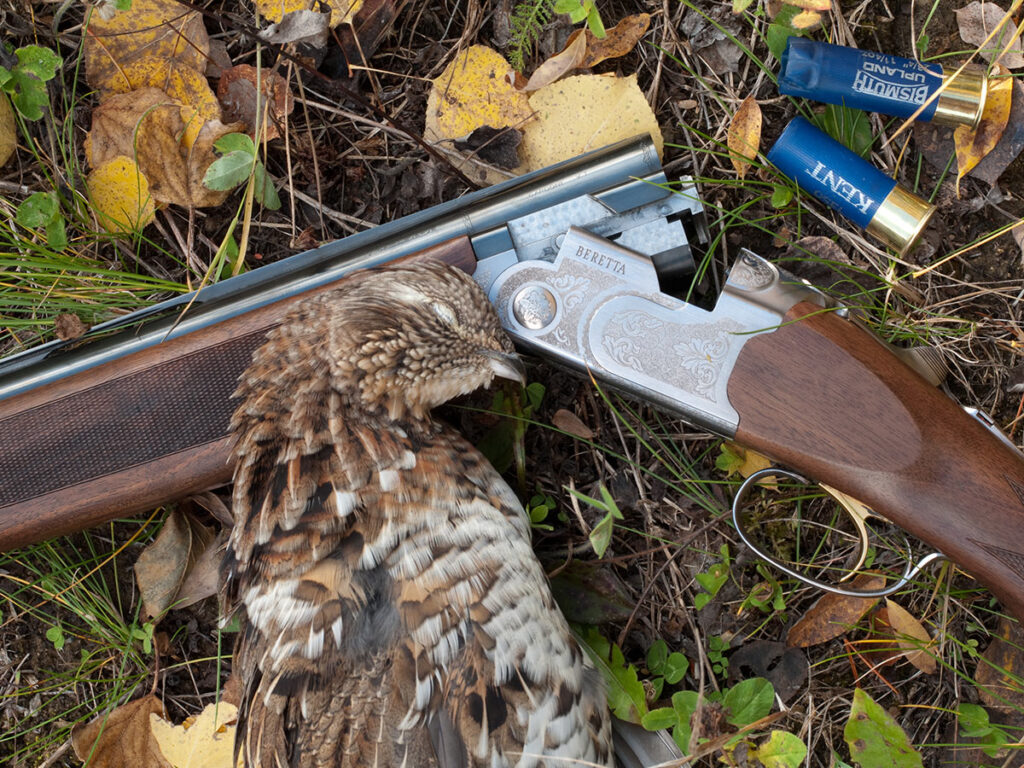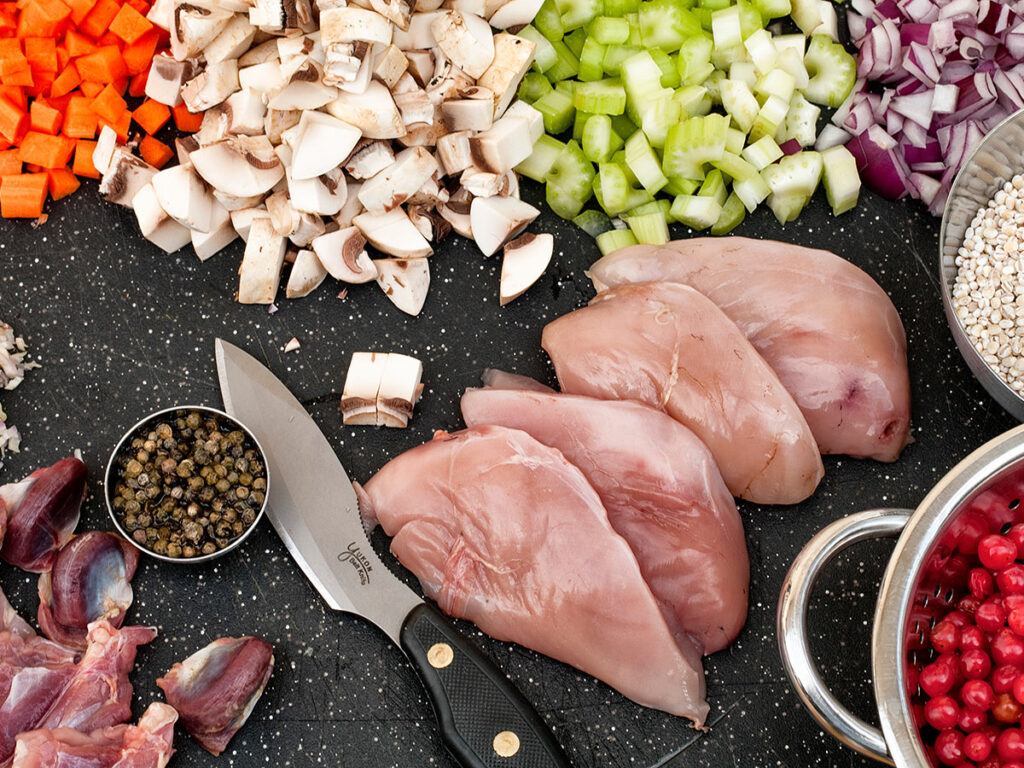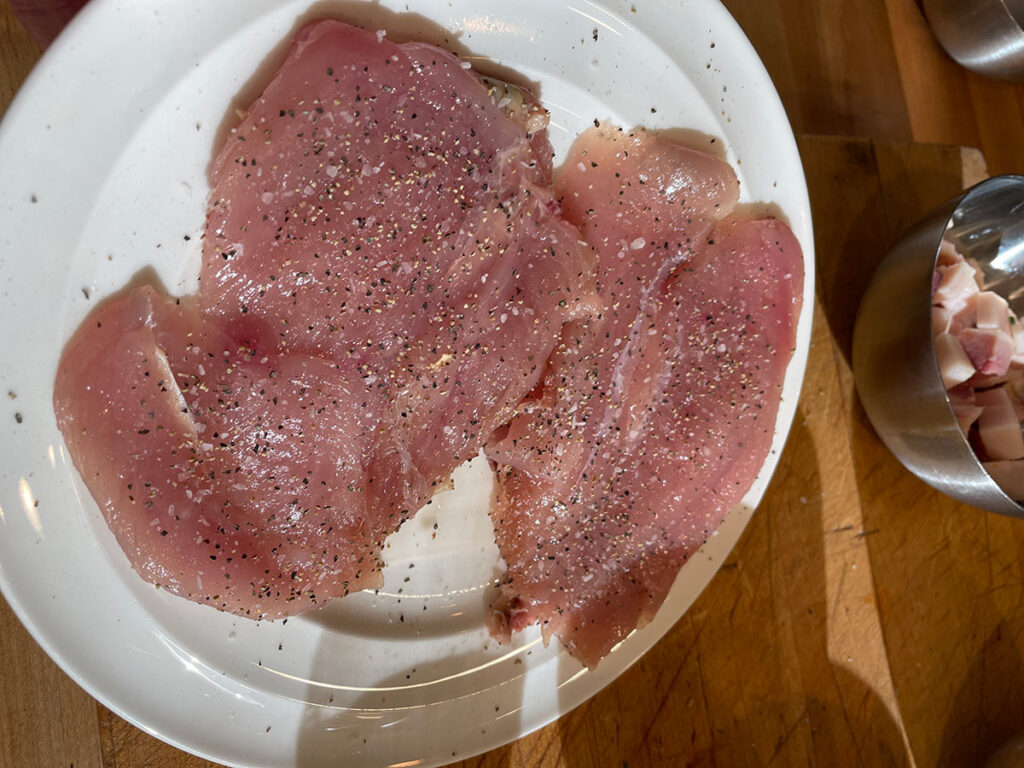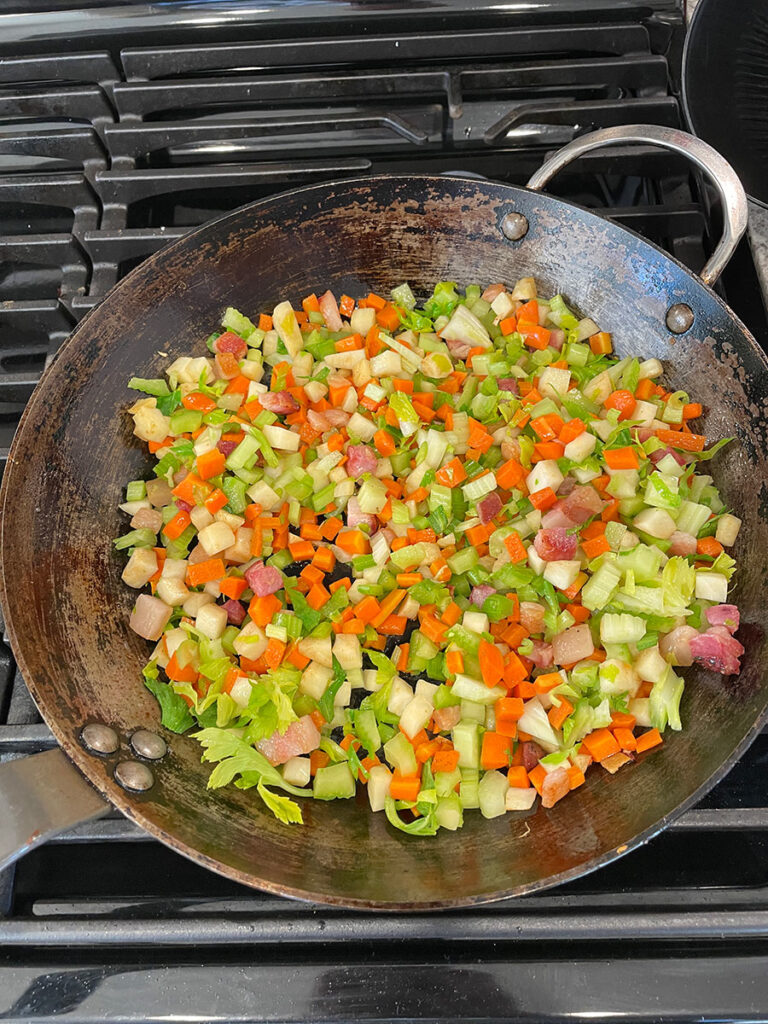At CarnivoreWeb.com, we independently review products and outfitters. However, we may earn a commission when you purchase products through links on our site. Read our affiliate policy. Read about how we test products.
Distilled Apple Spirits and a Canadian Version of Classic, Crisp White Wine are Perfect Counterpoints to this Delicate Bird.
As the boreal forest ruffed grouse season develops from early fall to midwinter, so does the delicate delightful funk of these birds as table fare. Early in the season, grouse eat rose hips, lowbush cranberries, blueberries, and green clover. All these berries influence the flavor at the table. As the boreal forest proceeds into winter, ruffed grouse eat more seeds and dry forbs. The flavor intensifies. Early season ruffies are different than late-season grouse. Both are delicious and remain one of my family’s favorite celebratory game meals — plenty good enough for date night.
Hunting upland game remains an autumn pleasure that extends back to my boyhood. I have vivid memories of walking with my father along a prairie fence line in farm country, flushing sharp tails and Hungarian partridge. Now, in the boreal forest, I hunt deer, bears, and elk in the fall with my own sons, and the forest seems full of ruffed grouse and the odd spruce grouse. Ruffies are featured on our evening hunt-camp plates often, and every season we try to save and freeze a few so we can remind ourselves regularly just how delicious these birds are. I always keep the legs, liver, hearts, and gizzards, but sometimes I want just a Saturday night dinner of grouse breast. This fancy but simply prepared meal is suitable for your best china and silverware.

The hint of apple that remains from Calvados flambe and the addition of spicy apple-tart of Gewurztraminer are perfect sauce pairings for this exquisite bird. Add a bit of game bird stock and heavy cream to finish the sauce. Barley and root vegetable pilaf seems about as perfect a starch and vegetable pairing as possible.

This Canadian vinted Gewurztraminer comes from Grey Monk in British Columbia. If you can find it, snap it up. But don’t fuss if you can’t find this wine. My second choice is any Gewurztraminer from Alsace; your wine merchant can help you find a decent one. As far as Calvados goes, you want the real deal. Calvados is French brandy distilled from fermented apples — a bone-dry spirit with a lovely hint of apple essence. Save some to sip after dinner, like you would a premium cognac. Feel the warm autumn afternoon sun on your back as you meander down a forest trail while chatting with your hunting partner or your Gordon Setter.

Tools & Equipment
- Flexible boning knife
- French knife (10-inch preferred)
- Solid cutting board
- Cleaver or meat mallet
- Plastic wrap
- 12-inch sauté pan to handle all the vegetables
- Rice cooker (preferred) or 6-cup saucepan
- Assorted containers/bowls for mise en place

Ingredients
- One ruffed grouse, plucked, eviscerated, breasts with skin on removed (retain legs, gizzard, and heart)
- Butter (as required depending on bacon fat)
- 1 oz. Calvados
- 2 oz. Gewurztraminer
- 2 oz. 35-percent (heavy) fresh cream
- ½ cup rye flour
- Coarse salt and pepper
- 2 ounces (for sauce) plus 2 cups (for pilaf) gamebird stock (can substitute chicken stock)
- ¾ cup pot barley
- 1 cup medium diced carrots
- 1 cup medium diced celery root
- 1 cup medium diced celery stalks
- 1 cup medium diced green onion
- ½ cup lardons (thick sliced double smoked bacon, diced medium)

Directions
- Enjoy the pursuit and harvest of a wild ruffed grouse. Chill, pluck, and eviscerate the bird. Reserve cleaned gizzard, heart, liver, and legs for another purpose. You could easily give the legs pretty much the same treatment; they need 20 minutes or so to simmer separately from the fast-cooking breasts.
- Prepare your mise en place: Peel and dice vegetables and bacon; prepare rye flour for dredging. Gather and assemble all ingredients, tools, and equipment before starting to cook.
- Remove both breasts. If this is done in advance, the bones can be used to make game bird stock. Reduce that by half to use in this recipe — both in the sauce and the stock for the barley pilaf.
- Place each grouse breast on the cutting board between two sheets of plastic wrap and flatten with the cleaver side or mallet to 3/16 inch. Season both sides with coarse salt and pepper, dredge in rye flour, cover, and return to the fridge.
- Start the barley in the rice cooker or bring the stock to a simmer in the saucepan and add the barley. Follow your barley package instructions for liquid/grain ratio. I use the same ratio in the rice cooker as I do for brown rice.
- Sauté the bacon lardons over medium heat to remove some fat and caramelize the diced bacon. Remove the bacon and drain.
- Leaving the bacon fat in the sauté pan, add the diced vegetables and increase the heat to high. Stir well every few minutes and keep a close eye on its progress. When the vegetables start to caramelize, remove them from the heat and stir them into the barley in the rice cooker or saucepan.
- Pour the Gewurztraminer for the table.
- When the barley is cooked, reheat the saucepan and sauté the ruffed grouse breasts on medium-high. As soon as both sides are well browned, add calvados, flambe (use extreme caution on account of the flash and flame), turn the heat to high, and add the Gewurztraminer and cream. Watch this carefully. As soon as the sauce has reduced enough to coat the back of a spoon, serve the breasts and sauce over barley pilaf.
- Garnish with a sprig of parsley.
- Save some Calvados for a post-dinner digestif.
Editor’s Note: This article originally appeared in Carnivore Magazine Issue 6.
Why You Can Trust CARNIVORE
Since its launch, CarnivoreWeb.com has been a trusted authority on hunting, fishing and wild food, delivering expert insight for outdoorsmen who live the field-to-table lifestyle. More than a hunting and fishing site, CarnivoreWeb.com covers the full spectrum of the modern outdoors—from rifles, bows, and fishing gear to cooking, conservation and adventure.
Our contributors are drawn from across the hunting and angling world, including seasoned guides, lifelong hunters, competitive shooters and outdoor writers with decades of field experience. Every review, article and feature is built on firsthand testing, deep research, and an unwavering commitment to accuracy.
Commitment to Journalistic Principles
At CarnivoreWeb.com, upholding journalistic integrity is our top priority. We follow strict editorial standards to ensure all content is accurate, transparent, and unbiased. Our editors and writers operate independently, free from outside influence, advertisers or stakeholders. We adhere to established journalistic codes of ethics, holding ourselves accountable for the information we publish, correcting errors when they occur and disclosing any potential conflicts of interest.
This commitment ensures that our readers can trust CarnivoreWeb.com to provide reliable, honest coverage that helps them make informed decisions—whether selecting gear, honing outdoor skills or preparing wild game.
Find out more about our Editorial Standards and Evaluation Process


